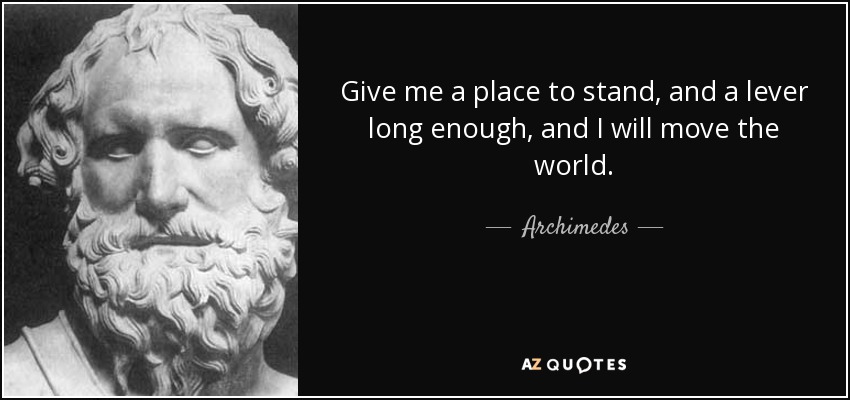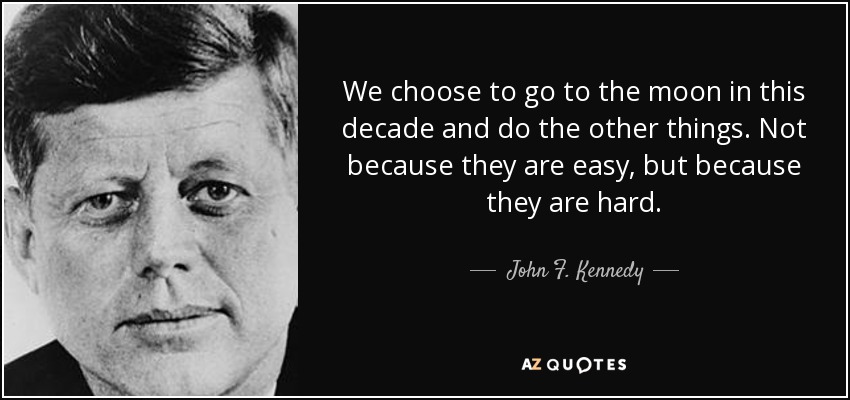Previously we discussed token metrics and the first two stages of the tokenomics framework (UNAGIs) i.e. Users and Needs).
Step 1: Identify Your Users
Step 2: Identify Their Needs
Step 3: Define Actions & Goals
Step 4: Build an Incentive Mechanism
Step 5: Test and Simulate KPIs
Now we focus on steps three and four: the AGIs. The Actions, Goals, Incentives shape the project’s community and we will use this framework as a map to align and fulfill the long-term vision. This is an iterative framework built on three general questions: the what (Goals), the how (Actions), and the why (Incentives). Once we have a general sense of the map, we run simulations to find potential malevolent pitfalls and sinkholes.
Previously we discussed token metrics and the first two stages of the tokenomics framework (UNAGIs) i.e. Users and Needs).
Better Questions → Better Results
In the past, computers were used as decision support systems (DSS) that leveraged expeditious processing of vast amounts of data. Today, healthcare providers use DSS to assist in diagnosing and treating a patient based on their medical history and symptoms. Financial advisors use DSS to recommend investments based on an individual's risk tolerance and financial goals.
AI tools like ChatGPT and Dalle-2 are paving a new pathway of content generation tools and in doing so are redefining the meaning of creativity.
With minimal effort and friction, one can generate a great blog, do homework, or create fantastic designs in the style of legendary artists – in seconds rather than hours or days (and in some cases years). Think about the groundbreaking implications of this. Just like a crane replacing dozens of labourers with one person, these tools can transform the work of one to equal 10x knowledge workers.
In the near future, people and organizations that take advantage of these exponential technologies will break through from the pack of competitors. The “only” essential skill is knowing to ask the right questions.
Better questions help us think more deeply, critically and creatively, expanding our perspective and leading to more innovative and effective solutions. Additionally, better questions can help us to engage more fully with the problem at hand, clarify our thinking and focus our efforts. Asking the right questions results in fully aligned project goals, values and vision.
Lore has it that what made Microsoft so successful is one audacious question. Instead of the cookie-cutter question “How can I make a great product?”, Gates asked “How can I create the intelligence that will control all computers?” (or what product is needed for that).
Lava, a decentralized p2p RPC network, was born from asking what is missing in Web3 and what is most important for Web3 to thrive. The answer is removing single points of failure and decentralization of the stack. In this exceptional blog written by @moxie, you can follow his thought process.
Peter Drucker, the father of modern knowledge work said, “Efficiency is doing things right, while effectiveness is doing the right things”. So one should think deeply about clarifying the right questions for the project. Start with the “what” and later focus on the “why”.
Actions, Goals, and Incentives: How, What & Why
In part 1, we touched on the power of Web3 communities – specifically building bottom-up and aligning user incentives to create a win-win-win outcome that produces a positive sum game (i.e. a bigger pizza). We said that humans are controlled by two forces – pain and pleasure – and we want less of the former and more of the latter.
Incentives (and disincentives) are rewards (and punishments) that are used to encourage a specific behavior or action. Type I is monetary and type II is non-monetary.
Monetary incentives are tokens (fungible or not), surprise Airdrop/potential price appreciation/ROI, a potential new income stream, or a future promotion.
These are the “obvious” incentives that most projects focus on.
But oftentimes, type-2 (non-monetary) incentives are better, stronger motivators. They include recognition or praise, feeling unique/significant/important (contests, leaderboards, acknowledgments, gamification), having choices and variety (“good” surprises, easter eggs), feeling needed/heard/in control (governance tokens), being part of a community/tribe, sponsoring and helping others (scholarships, donations, teaching). Or in general feeling that you add value to people you care about as part of a greater common vision (we’ll say more about vision later).
Why are we “happy” when a stranger likes our posts? If you watched The Social Dilemma you are well aware how social networks are designed to give you that dopamine shot (just enough to keep you engaged).
Why would a person spend time and effort flying to the other side of the world, and pay thousands of dollars to watch a soccer game he can watch for free from home? Because watching your favorite singer, or experiencing a goal by your team in a packed stadium, surrounded by your “tribe”, is a totally different ball game.
Projects should employ as many (legal…) incentives in their arsenal, but the game changers that really create viral network effects belong to type-2 incentives. When the user is a raving fan (not just a client or customer) – that’s how organic virality is created.
Goals: Expanding the Pie
Total addressable market (TAM) is the potential revenue available for a product or service, and is used to prioritize business opportunities by evaluating their potential. The more (value-generating) users and resources, the better.
In industrial engineering, this is called Operations Research, or OR, which is a discipline that deals with the development and application of analytical methods to improve decision-making. At its heart are resource management and optimization (i.e. more and better).
Ideally, a product should aspire to have as many consumers and producers/contributors as possible, without sacrificing the product’s quality and uniqueness. That’s the hard part. It should also aspire to possess maximal resources (until diminishing return) as well as a 100% utilization rate. This means not running superfluous resources when there’s low demand.
The two greatest levers are incentives and removing friction. With the right incentive model and mechanism, as well as a large and quality community, the project can be operated like the traditional Web2 open-source projects which are built and maintained by the community members (i.e. type-2 incentives). The huge advantage of Web3 is adding type-1 incentives, thus attracting better contributors who now have “skin in the game” as well. The real magic happens when the two are combined. The areas of focus should be: integration with other projects, usage, users, resources (compute, storage, etc), contributors (devs, marketing, content creators), UX and tools.
Building a great and intuitive UI is hard, but can be a great differentiator, especially since current crypto is lacking on the UX front. Additionally, providing tools such as: “1-click” UI (Stride), chatbots (Axelar), SDKs (Forta), APIs (Squid) &libraries, templates – both code and brand (SubQuery).
Goals by User Needs
One method for BS (brainstorming) ideas is looking at goals from different angles and dimensions. Some goals will appear in a different dimension. Goals that appear in multiple dimensions signify better alignment.
Example #1: User goals that promote certainty/trust/security

In part 2, we said that Satoshi invented an automatic, code-based “trust machine” that removed untrustworthy, expensive, and inefficient humans from the equation.
Automation is another fundamental aspect of any decentralized product and ideally the perfect product operates itself. This of course is currently unfeasible, but striving for as many automatic and semi-automatic processes is key.
The invention of AMMs (automated market makers) by Bancor in 2017 was one of the most important inventions in crypto’s short history. This crypto primitive, with the help of Compound and AAVE who introduced lending and borrowing, was the catalyst for the DeFi summer of 2020.

UGC
2022 was a pivotal year in the field of artificial intelligence and decision support systems (DSS). The development of AGI, or artificial general intelligence, is fast approaching a breakthrough point, allowing for machines to possess a level of intelligence comparable to that of a human. The new shiny tool on the block, just released two weeks ago is ChatGPT – a chatbot model developed by OpenAI that uses natural language processing to generate human-like responses to user inputs (i.e. prompts and questions).
It took ChatGPT a mere 5 days for it to reach 1M users, temporarily dethroning the previous trendy mind-blowing AI, DALL-E 2, which is capable of generating amazing images from text descriptions, allowing it to create visual representations of ideas and concepts.
User-generated content (UGC) is any type of content, such as text (e.g. code, content, feedback, docs, translations), images, videos, or audio (marketing, tutorials, teaching material), that has been created and published by users, rather than by “professional” journalists, publishers, or content creators. UGC can include everything from blog posts and reviews, to social media posts and comments, videos and podcasts. It is often seen as a more authentic and trustworthy form of content, as it comes from regular people sharing their own experiences and opinions, rather than from media organizations or advertisers. Web3 projects need to recognize the untapped value of UGC and actively encourage their users to generate and share content related to their products or services.
On Facebook (Meta), for example, every user is participating in UGC. We are all producers and consumers. Every action – posting, clicking, liking, following, sharing and even reading (i.e. not scrolling) – feeds the marketing and AI machine. All these actions automatically improve the algorithm and models by retraining and updating user preferences, as well as the audiences to which the user belongs.
The problem – and the Web3 opportunity – is that we, as consumers, get almost no value in return, since Facebook doesn’t offer a profit-sharing mechanism for the average user.
That’s the focus of Embed protocol – An Engage-to-Earn protocol for curating, powering, and activating metaverse communities or, in short, a Web3 advertising protocol, building from the bottom-up.

Without A Vision, People (and Products) Perish
A product’s vision is a statement that describes its future direction, goals and purpose.
Bitcoin and crypto were created around a vision of a free, open and trustless economy that will free the unbanked from a life of poverty. Big, audacious goals move people (emotionally and physically), and the hope of a better future makes people stay supportive when the odds are stacked against them.
That’s why moonshots like SpaceX and Tesla have succeeded against all the odds.
And that is one of the main reasons why people bought Bitcoin in the early years. The other side of the equation is the token economics and game theory that we’re designing into the protocol – which fueled its growth and made it what it is today.
To put it another way: ask not what your protocol can do for you; ask what you can do for your protocol.
Join us next for our 4th (and last) part of the Tokenomics series, where we’ll discuss running tokenomics simulations and best practices on how to launch a token.
Want to share thoughts?



